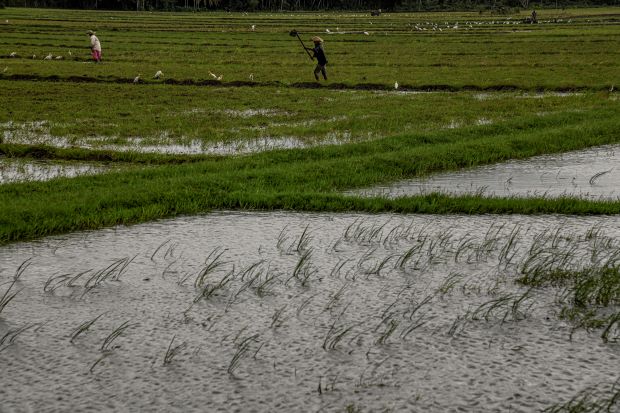Sri Lanka identifies 12 high-risk districts for rat fever as cases surge past 10,000
COLOMBO – Sri Lankan health authorities have identified 12 districts as high-risk zones for the spread of leptospirosis (commonly known as rat fever), amid growing concern over the rising number of infections in farming communities.
Minister of Health and Mass Media Nalinda Jayatissa told Parliament that the high-risk districts are predominantly areas with extensive agricultural activity, where thousands of people work in paddy fields and irrigated lands. He warned that the risk of infection increases significantly during the cultivation season as farmers are frequently exposed to contaminated water and soil.
“Leptospirosis is not just a rural health issue; it is a national concern. Most cases are reported from paddy farming regions, where farmers wade through water that may be contaminated with the urine of infected animals,” the minister said.
According to the Ministry of Health, more than 10,000 cases of leptospirosis were reported in 2024, making it one of the most prevalent infectious diseases in the country. On average, about 200 Sri Lankans die each year due to complications arising from the disease, which can cause kidney failure, liver damage, respiratory distress, and internal bleeding if not treated promptly.
Health experts have noted that many patients delay seeking medical attention, mistaking early symptoms, such as high fever, muscle pain, and headaches, for common flu or dengue. By the time they reach hospitals, the condition is often severe.
Despite the alarming figures, Minister Jayatissa assured lawmakers that the government has adequate stocks of prophylactic and treatment drugs to manage the disease.
“We currently have enough medication to prevent and treat leptospirosis for the next 12 months,” he said, adding that the Health Ministry has already distributed supplies to vulnerable districts ahead of the next planting season.
Public health officials emphasize that prevention and early intervention are critical. Farmers are encouraged to take prescribed preventive antibiotics during high-risk periods, wear protective gear when working in flooded fields, and avoid contact with stagnant water whenever possible.
The Epidemiology Unit is also working with local authorities to strengthen awareness campaigns, improve diagnosis at rural hospitals, and conduct surveillance in affected areas. Some districts have introduced special mobile clinics to reach remote farming communities.
Health specialists warn that changing weather patterns, heavy rainfall, and flooding have contributed to the spread of rat fever in recent years. Floodwaters create ideal conditions for leptospira bacteria to survive and spread, while poor sanitation and rodent infestations further increase the risk.
Leptospirosis has long been a recurring public health challenge in Sri Lanka, particularly in wet zone districts. However, with the disease now spreading to new areas and case numbers remaining high, experts say a more coordinated strategy is required.
Minister Jayatissa said the government is developing an integrated response involving the health, agriculture, and local government sectors to better protect at-risk communities.
“Protecting our farmers means protecting our food security,” he told Parliament. “We must ensure they are safe from preventable diseases.”
-ENCL



Comments are closed, but trackbacks and pingbacks are open.